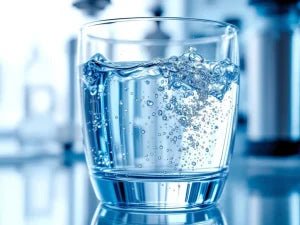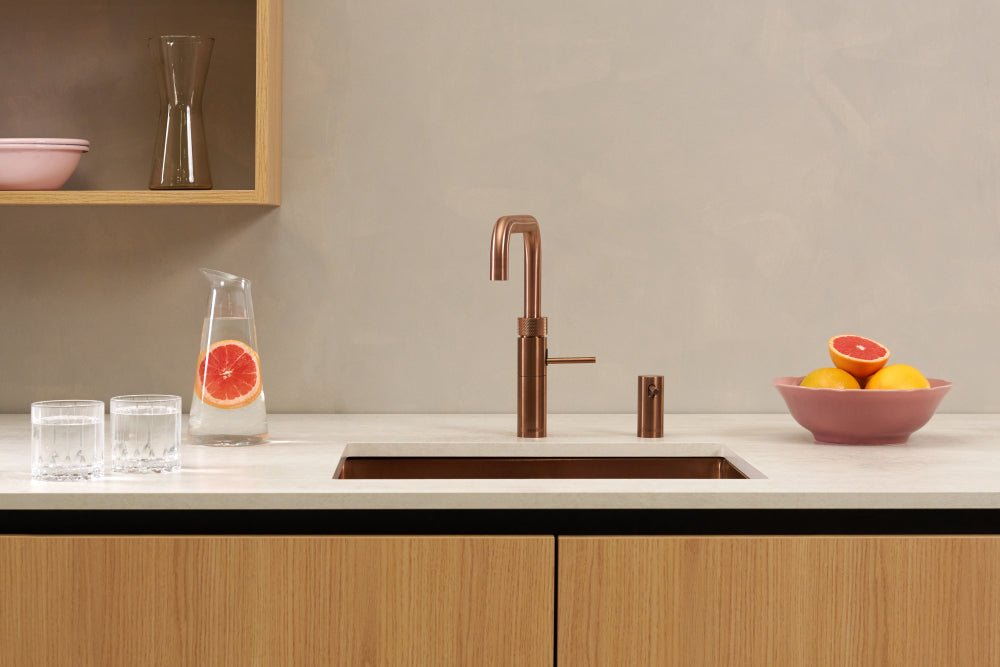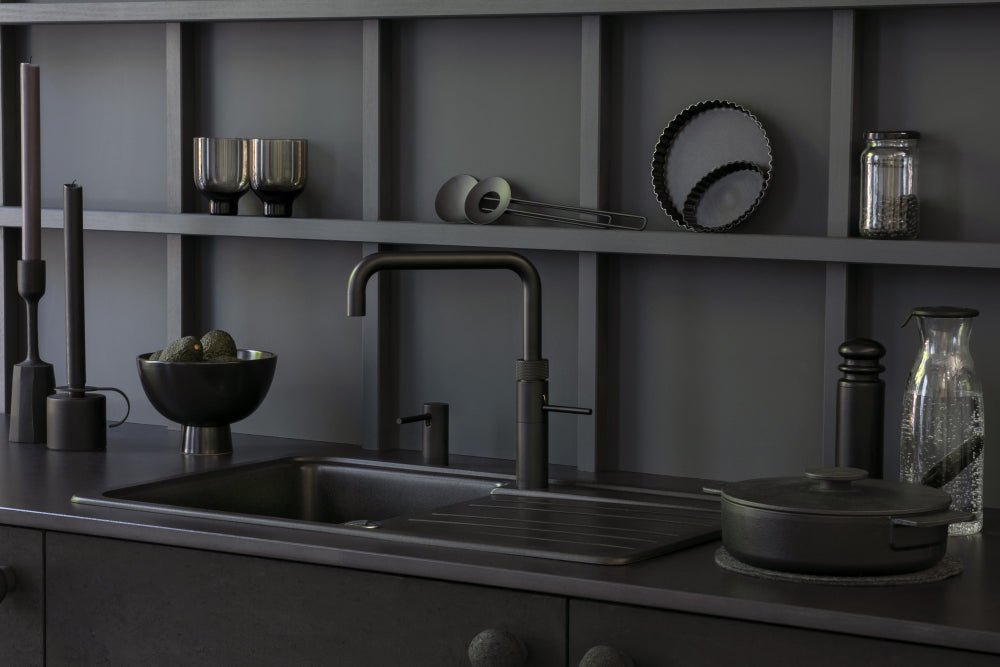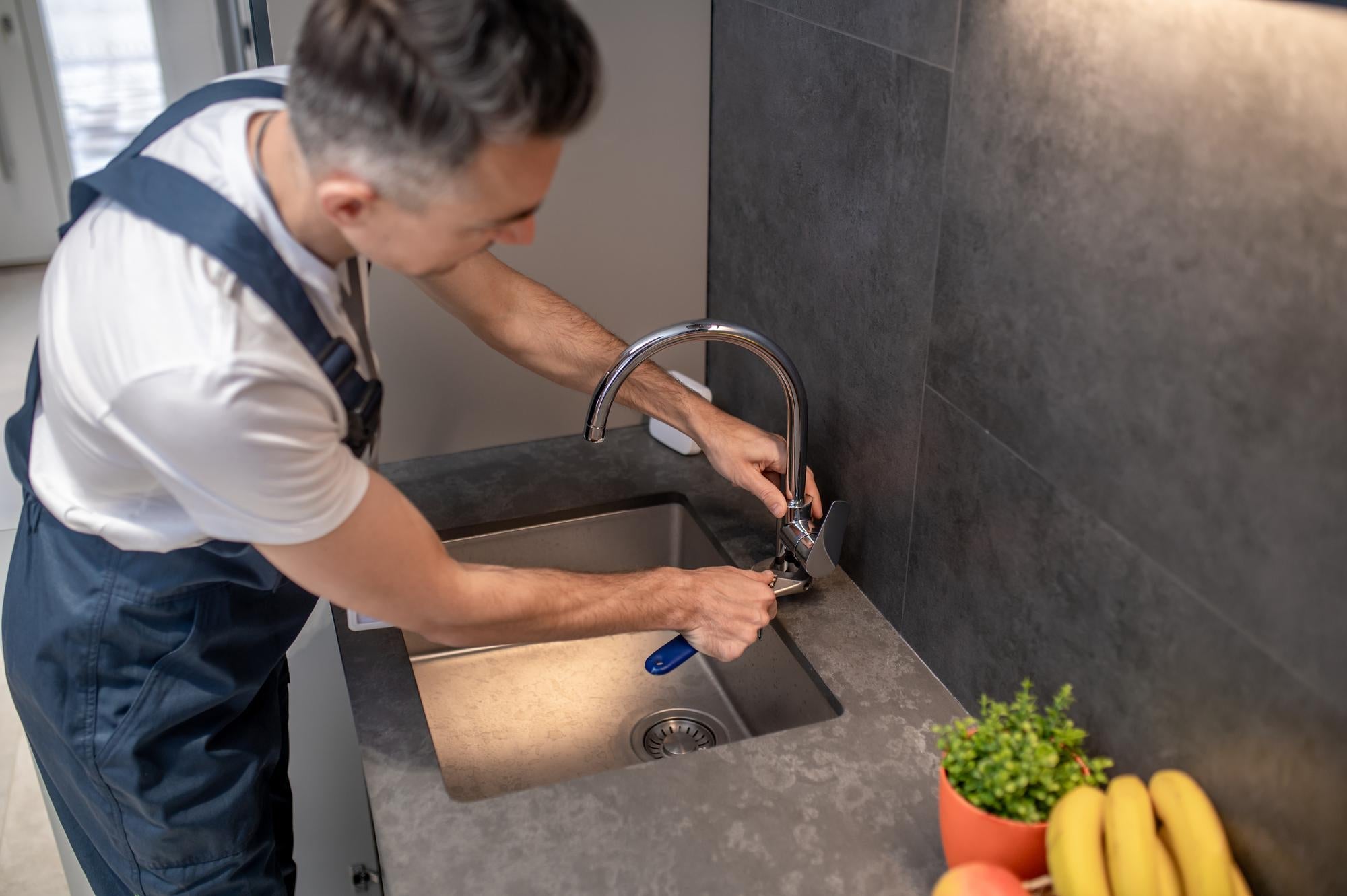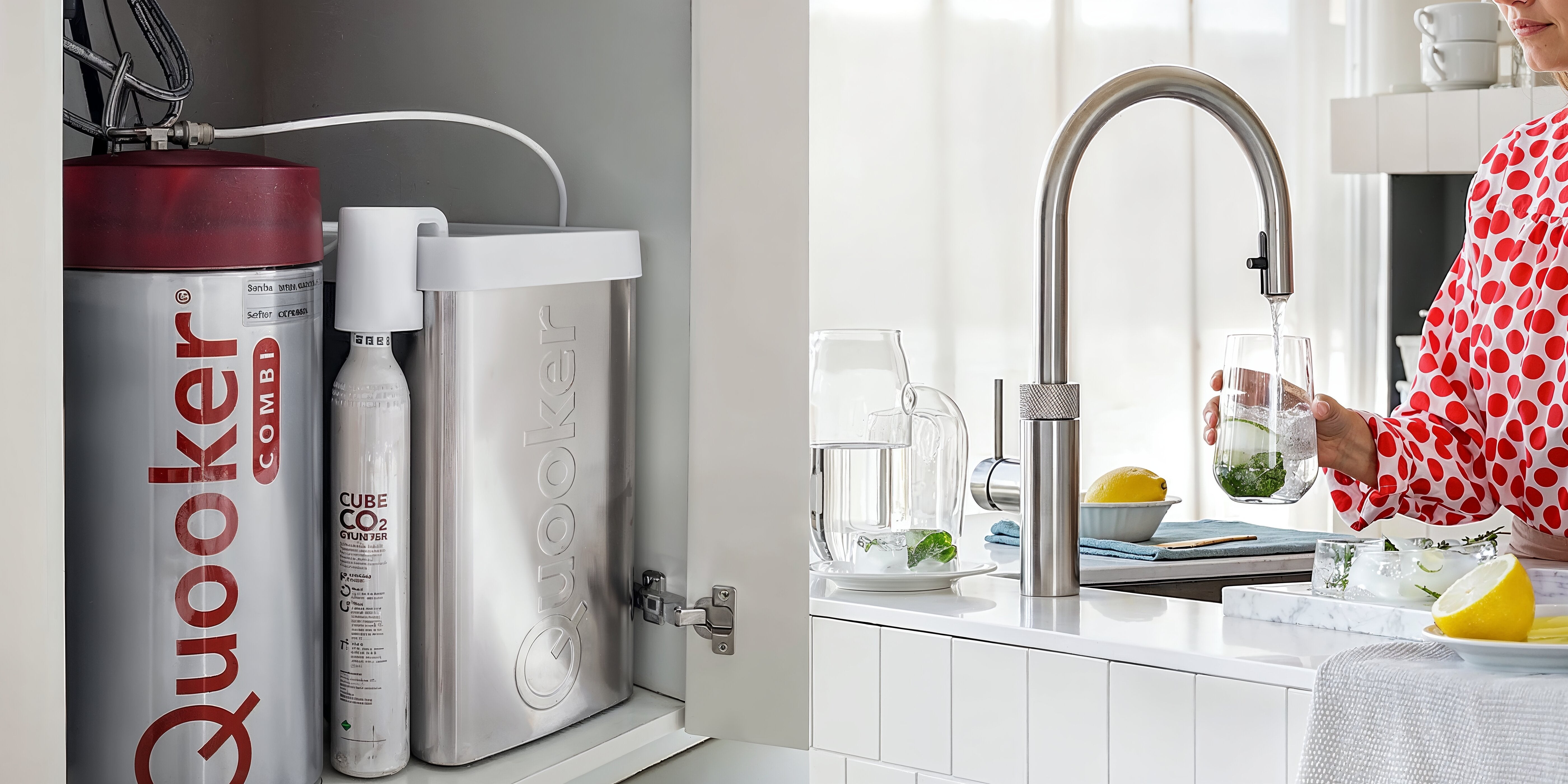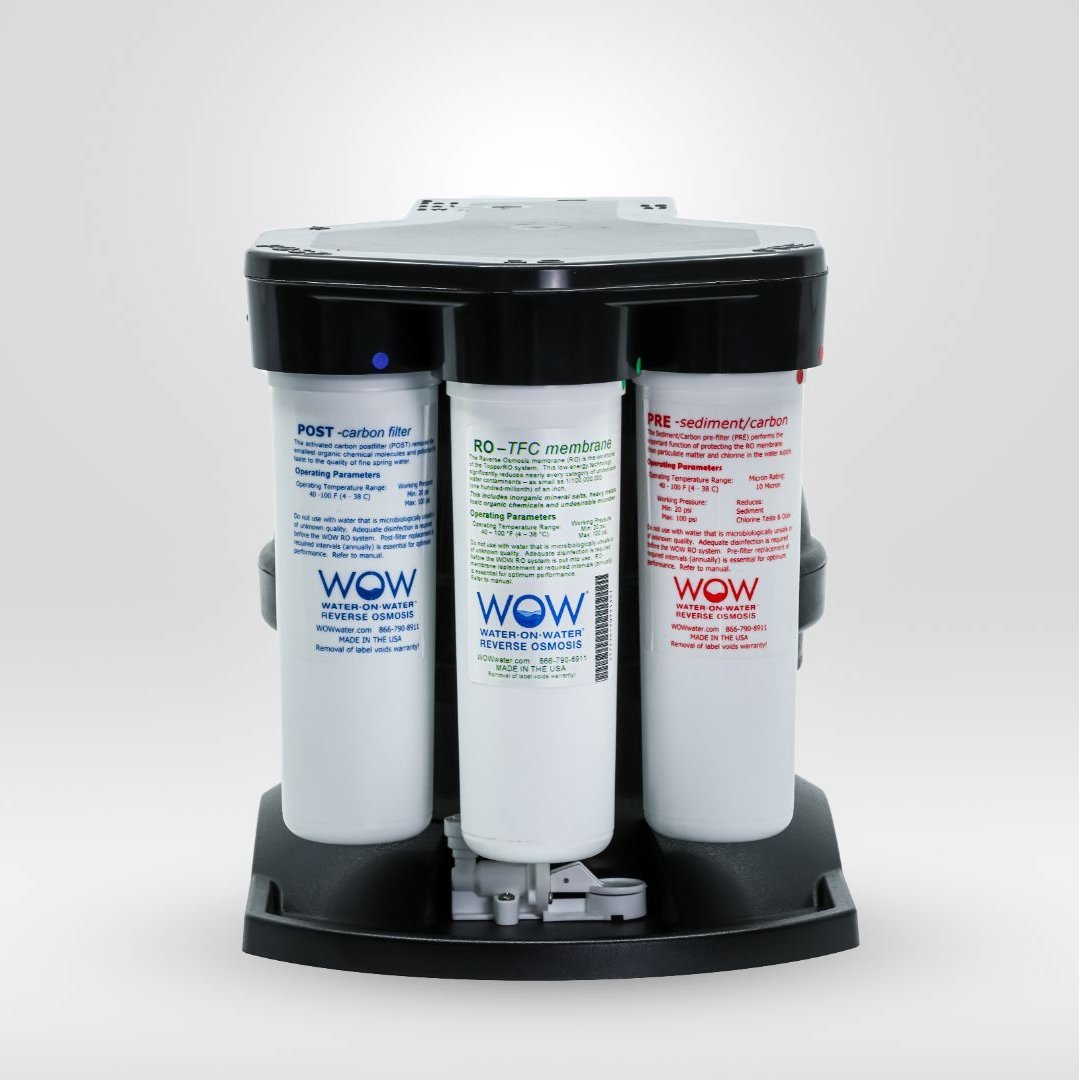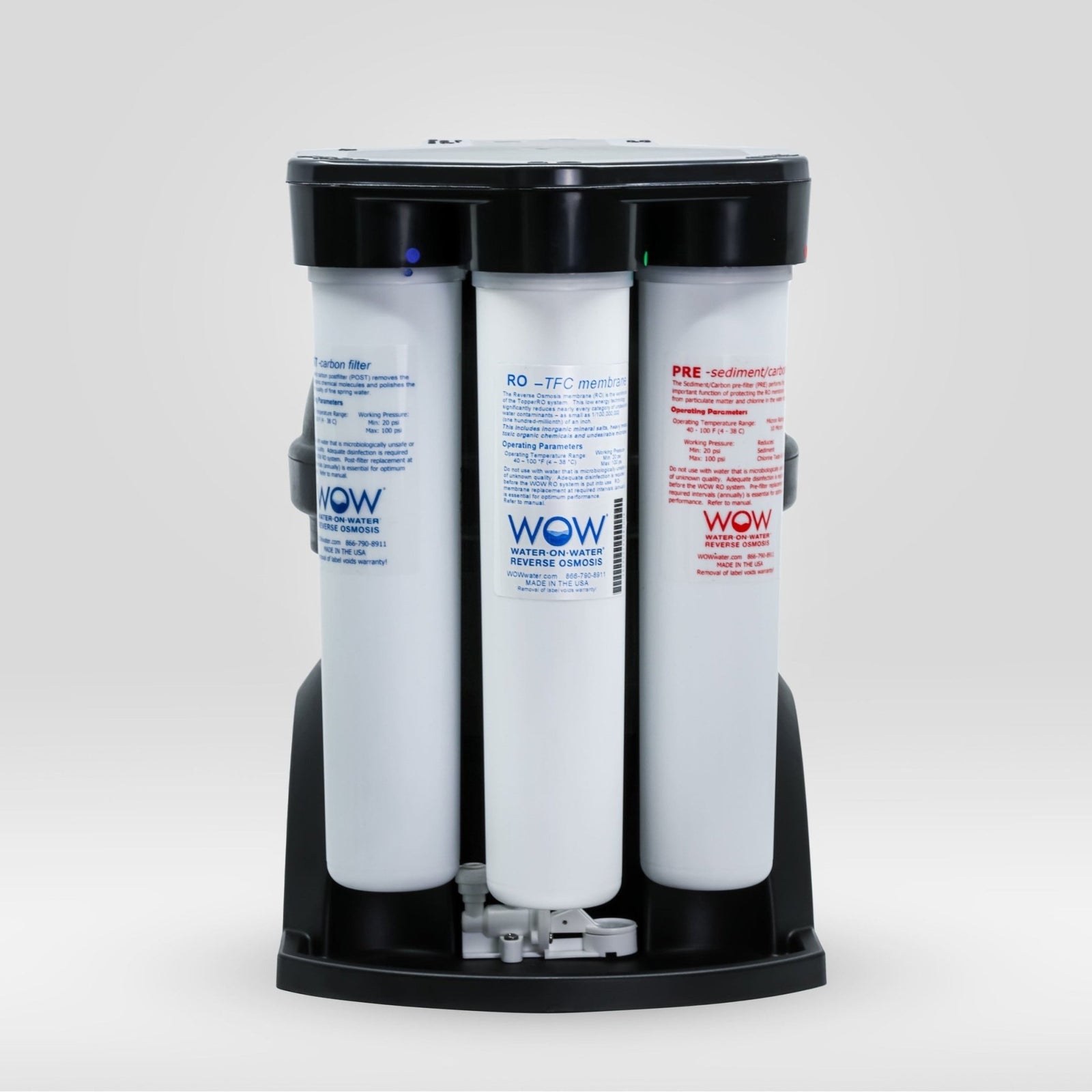Cloudy tap water is water that isn't clear but has a milky, yellowish, or brown color due to the presence of particles. This can range from harmless air bubbles that disappear within minutes to more serious contaminants such as sediment, minerals, or microorganisms. The health risks depend on the cause: air bubbles are harmless, but bacteria, parasites, or heavy metals can be dangerous, especially for vulnerable groups like babies and the elderly.
Cloudy tap water: when should you worry?
Cloudiness in tap water has various degrees of turbidity, each with its own meaning. Slight discoloration that disappears within a few minutes usually indicates harmless air bubbles due to pressure changes in the water supply system. This often occurs in the morning when the water is first used or after work has been carried out on the water pipes.
If the water remains cloudy for a long time or contains visible particles, there may be a structural problem. Milky white water that doesn't clear up can indicate excessive minerals such as limescale. Yellow or brown water often indicates rust from old pipes or loose sediment.
You should be concerned when:
- The cloudiness persists for more than 24 hours
- The water has an unusual odor or taste
- There are visible particles or flakes floating in the water
- The discoloration is accompanied by health problems
- Several households in the area are experiencing the same problems
Temporary cloudiness after scheduled maintenance is normal and usually disappears within a few hours. If structural problems recur or persist, it's advisable to contact your water company or have a water analysis performed.
What causes cloudiness in tap water?
The most common cause of cloudy water is air bubbles due to pressure changes in the water supply. These bubbles form when cold water under high pressure is suddenly heated or when the water pressure fluctuates. The water appears milky but clears within minutes when left in a glass.
Mineral deposits are a second major cause. Limescale (calcium carbonate) and iron can build up in pipes and become dislodged during pressure changes or maintenance work. These minerals give the water a white to yellow-brown color that doesn't disappear on its own. This is more common in areas with hard water.
Sediment from old pipes is a particular problem in older homes with cast iron or lead pipes. Corrosion releases rust particles that turn the water brown. This type of cloudiness is often worst after a period of inactivity, such as after a vacation.
| Type of turbidity | Cause | Features | Duration |
|---|---|---|---|
| Milky white | Air bubbles | Clears up from bottom to top | 1-5 minutes |
| White/gray | Limescale deposits | Remains cloudy, possibly flakes | Permanent |
| Yellow/brown | Rust/iron | Discoloration, metallic taste | Hours to days |
| Green/blue | Copper oxidation | Especially in the first liters | Reduces when flushed |
Understanding the difference between temporary and permanent cloudiness is crucial for addressing the issue. Temporary cloudiness caused by work or air bubbles resolves itself. Permanent cloudiness caused by minerals, sediment, or microbiological growth requires action, such as installing a water filtration system that effectively removes these contaminants.
Is cloudy tap water dangerous for my health?
The health risks of cloudy water depend heavily on the underlying cause. Cloudiness caused by air bubbles is completely harmless; the water contains only dissolved air, which has no effect on water quality or health. You can recognize this form of cloudiness because the water in a glass clears up within minutes.
Mineral cloudiness due to lime or iron is usually not immediately dangerous, but it can be undesirable. Excessive lime intake can cause gastrointestinal complaints in sensitive individuals. Iron has an unpleasant metallic taste and can cause nausea at high concentrations. However, for most people, these minerals do not pose a health risk.
More serious risks arise when cloudiness is caused by:
- Bacteria such as E. coli or Legionella
- Parasites such as Cryptosporidium or Giardia
- Heavy metals from corroding pipes
- Chemical contamination from leaks
Vulnerable groups deserve extra attention when dealing with cloudy water. Babies under 6 months, seniors over 65, pregnant women, and people with weakened immune systems are at greater risk from water contamination. For these groups, it's wise to switch to bottled water or install a reliable filtration system if the water remains cloudy.
Dutch drinking water companies apply strict standards requiring turbidity to remain below 1 NTU (Nephelometric Turbidity Unit). Visibly cloudy water usually significantly exceeds this standard. If there are any doubts about its safety, it's always wise to have the water tested or temporarily use an alternative water source.
How do you test the quality of cloudy tap water?
The easiest way to test water quality at home is with a TDS meter (Total Dissolved Solids). This device measures the amount of dissolved solids in water in parts per million (ppm). Dutch tap water normally has a TDS value between 50 and 250 ppm. Values above 300 ppm may indicate elevated mineral concentrations.
Visual inspection is the first step in assessing cloudy water:
- Fill a clear glass with tap water
- Hold it against a white background
- Observe whether the water clears (bubbles) or remains cloudy
- Check for visible particles or discoloration
- Check if sediment forms after 30 minutes
Odor and taste tests provide additional information about water quality. A chlorine odor is normal and indicates disinfection by the water company. A metallic taste indicates pipe corrosion. An earthy or moldy odor can indicate biological growth. A rotten egg odor indicates hydrogen sulfide and requires immediate action.
Dutch drinking water quality standards are laid down in the Drinking Water Decree. The most important parameters for turbid water are:
- Turbidity: maximum 1 NTU on delivery, 4 NTU at the tap
- Iron: maximum 200 μg/l
- Manganese: maximum 50 μg/l
- Microbiological parameters: 0 CFU/100ml for E. coli
Professional water analysis is necessary when home tests reveal abnormal values, the water has an unusual odor or taste, or when health problems arise. Certified laboratories can perform a complete analysis, including microbiological parameters, heavy metals, and chemical contaminants. This analysis usually costs between €50 and €150 and provides definitive answers about water safety within a week.
Which filtration systems help against cloudy water?
Several water filtration methods are available for the effective removal of turbidity. Reverse osmosis systems offer the most complete solution by removing up to 99% of all contaminants, including dissolved minerals, bacteria, viruses, and chemicals. This technology forces water under pressure through a semipermeable membrane, allowing only pure water molecules to pass through.
Sediment filters are the first line of defense against visible particles. These filters trap coarse contaminants such as sand, rust, and other suspended particles. They are effective against physical turbidity but do not remove dissolved solids or microorganisms. Sediment filters are often used as a pre-filter in combination with other filtration technologies.
Carbon filters primarily improve the taste and odor of water by absorbing chlorine and organic compounds. Although they are only limitedly effective against cloudiness, activated carbon filters can remove certain chemical contaminants that contribute to discoloration.
| Filter system | Effectiveness against turbidity | Removes | Maintenance frequency |
|---|---|---|---|
| Reverse osmosis | Excellent (99%) | All types of contamination | Filters: annual, Membrane: 2-3 years |
| Sediment filter | Good for particles | Sand, rust, suspended solids | 3-6 months |
| Carbon filter | Limited | Chlorine, organic substances | 6-12 months |
| UV disinfection | No effect | Bacteria, viruses | Lamp: annually |
Installing a complete home water filter system usually requires professional help, especially with reverse osmosis systems. These are installed under the sink and connected to the water supply. The system consists of multiple filter stages, a storage tank, and often a separate tap for purified water. The investment ranges from €200 for simple systems to €800 for advanced reverse osmosis systems.
Maintenance is essential for continued effectiveness. Filters should be replaced according to schedule, with the frequency depending on water usage and the level of contamination. A TDS meter helps monitor filter performance. With proper maintenance, modern systems remain effective against all forms of turbidity for years.
Clear and healthy tap water: practical steps for improvement
If your water is cloudy, there are immediate steps you can take to quickly improve it. Start by flushing the pipes by running all faucets fully for 5-10 minutes. This removes standing water and loosened sediment. Start with the faucet closest to the main line and work systematically throughout the house.
For lasting improvements to water quality, installing a water filter system is the most effective solution. Modern systems with reverse osmosis technology remove not only turbidity but also invisible contaminants such as PFAS, pharmaceutical residues, and microplastics. The result is crystal-clear water that is not only safe but also tastes better.
Preventive measures help prevent future problems:
- Check and replace old pipes, especially lead or cast iron pipes
- Install a main filter at the whole house water meter
- Flush pipes weekly when used sparingly
- Maintain the boiler annually to prevent sediment build-up
- Test the water quality at least annually with a TDS meter
Contacting the water company is essential if multiple households are experiencing cloudiness, if the problems persist despite flushing, or if the water has an unusual odor or color. Water companies are legally obligated to provide safe drinking water and must take action if there are structural problems.
The benefits of purified water extend beyond pure drinking water. Tea and coffee gain a richer flavor without the disruptive effects of chlorine or minerals. Household appliances like kettles and coffee makers last longer thanks to reduced limescale buildup. Even flowers stay fresher longer in purified water. For families with young children, a reliable filtration system offers additional assurance of water safety. With the right approach, you can transform cloudy tap water into a source of health and enjoyment for the entire household.
